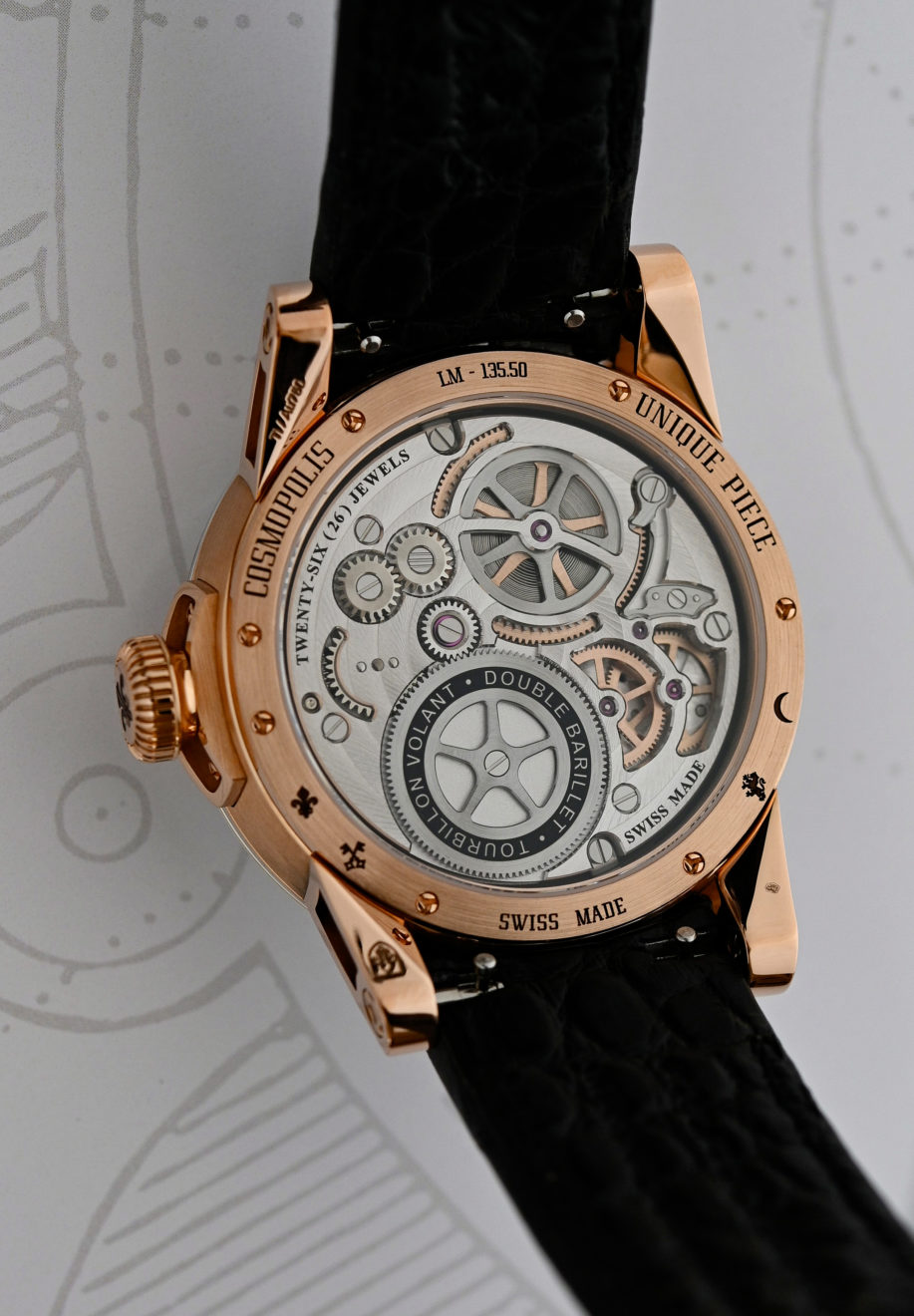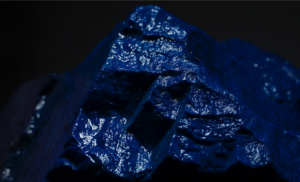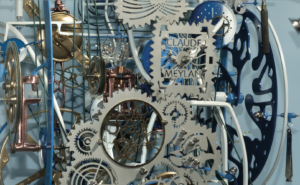By winning in Geneva the prestigious Guiness World Records™ title “most meteorite inserts in a watch” on Thursday, September 21, 2023, Louis Moinet has distinguished itself with its Cosmopolis flying tourbillon: twelve meteorites!
A Shaniah Asha Gibson selection / @TRP, Public Relations Cabinet
Insta | Linkedin | Facebook | Insta JSH | Insta SWP | S’abonner à JSH
Cosmopolis, the microcosm of the macrocosm, When watchmaking incarnates the universe in a unique timepiece.
Jean-Marie Schaller, owner and creative director
“I’ve been collecting exceptional meteorites for twenty years. Each has its own story. My collection contains rare pieces, like the lunar meteorite Dhofar 461, which is known for its white-speckled interior. And I have a valuable meteorite from Mars that is one of 300 samples identified to this day. I also have the famous Allende, the oldest rock in the solar system, and Erg Chech, the oldest magmatic rock known, which comes from a protoplanet that vanished at some point. As for the Jbilet Winselwan, what makes it remarkable are the traces of amino acid, which might well be the first signs of life in the cosmos. The Sahara 97093, on the other hand, distinguishes itself through its micro-diamonds, which took shape at the heart of stars explode and become supernovas. These fascinating stories were the creative spark that gave birth to the Cosmopolis. Even more than a great watchmaking work, Cosmopolis is a historic and scientific journey, a microcosm of the macrocosm.“
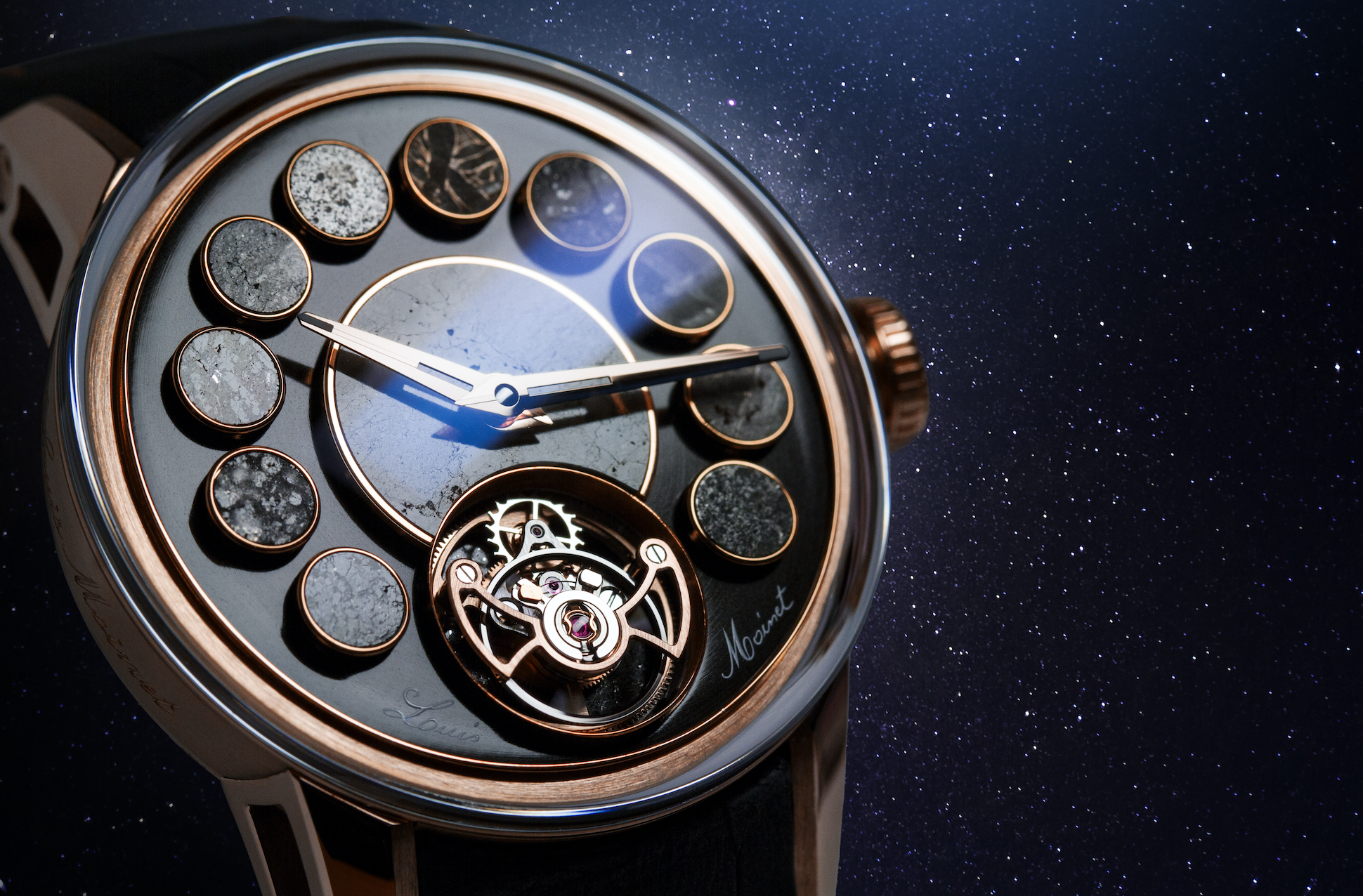
The genesis of a magnus opus
The story actually begins well before our times in the mysterious confines of outer space. Meteorites, some older than Earth itself, traveled billions of miles through space and ultimately found a home on our planet. Imagine these rocks coming from another world… They are of such unique composition that the price per gram surpasses that of gold and platinum combined. Just think of these materials that bore witness to the shaping of our solar system, that contain the first known traces of life in the cosmos. They can tell us stories of the stars that we are just beginning to comprehend.
Today, after their interstellar journey, Les Ateliers Louis Monet has assembled these heavenly treasures into a unique timepiece: the Cosmopolis.
A Guiness World Records™ on top
The Cosmopolis is in the spotlight on Thursday, 21 September, in Geneva, Switzerland. It is receiving a prestigious Guiness World Records™ title for the “most meteorite inserts in a watch” This means that Les Ateliers Louis Moinet will from now on be known beyond the borders of traditional watchmaking, where it will generate amazement for its sheer rarity globally.
This world record will also confirm the boundless creativity of Jean-Marie Schaller and his ability to generate emotions and make us dream. This title also reflects his deep gratitude towards his solid network of friends, passionate supporters, and craftsmen who contribute daily to the development of Louis Moinet watches.
Cosmopolis, an evocative name
The name Cosmopolis pays tribute to the connection between our world and the infinite universe. The prefix cosmo- suggests the sheer size of the cosmos, the stars, their mysteries. The suffix -polis suggests the cultural and artistic spirit of the city. Together, the name Cosmopolis embodies the very essence of this watch by merging the fascination for space with the timeless elegance of the watchmaking craft.
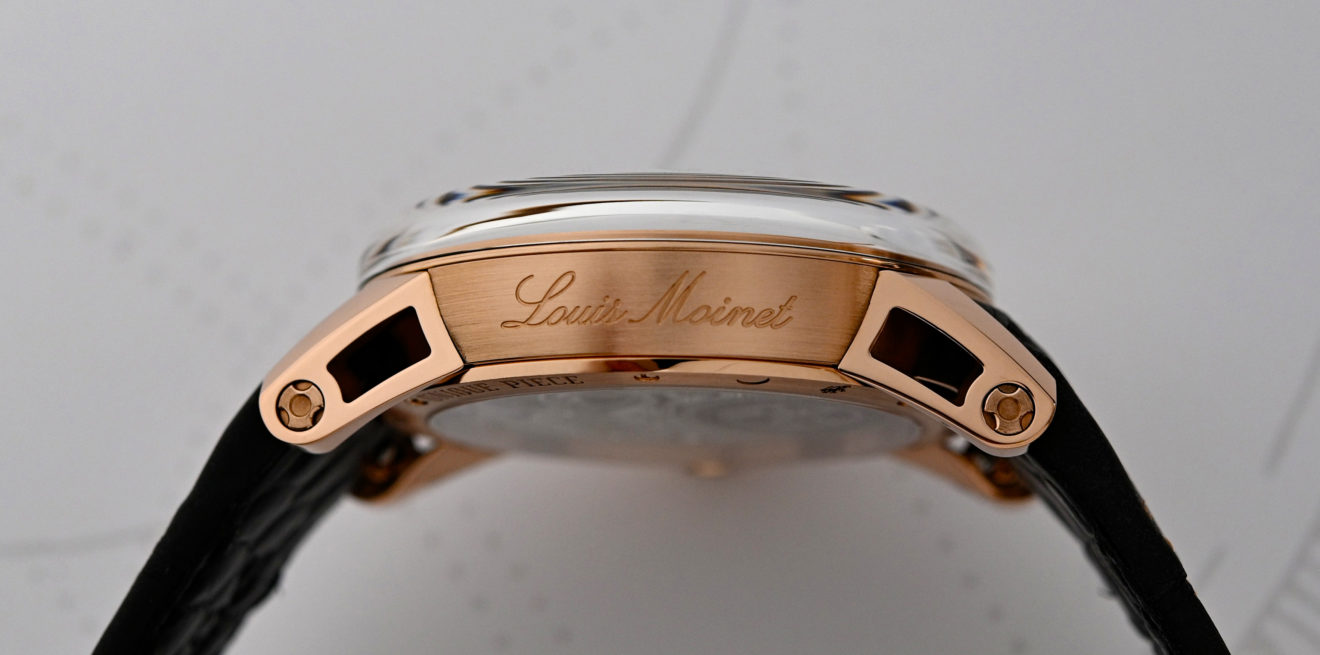
Twelve meteorites: an exceptional constellation
An aura of mystery emanates from the Cosmopolis. The time appears subtly between the meteorites, drawing the eye at each glimpse and inviting one to explore a cosmic microcosm. The dial itself is the stage for a veritable celestial theatre. Each fragment of meteorite has been placed so as to create a unique and fascinating constellation. In the centre is the rarest and most captivating stone of all, a lunar meteorite. One of these outstanding fragments, a black chondrite, is located in the back of the tourbillon cage, the beating heart of the mechanism. It’s a reminder of the powerful cosmic forces that have forged our universe.
Ten other special fragments have been carefully disposed, each on its own base that is discreetly attached to dark-grey, brushed dial. Each of celestial gems, is a witness to the origins of our solar system, each tells a billion-year-old story, one that includes the extraordinary voyage that them right to the Cosmopolis.
These slivers of history, these glimpses of eternity, these slices of the cosmos, this constellation of meteorites fuse space-time and the world of watchmaking to create the rarest work of art.
A noble case of rose gold
It comes in an 18-ct, 5N rose-gold case with a diameter of forty millimetres. The lines are fluid and taut at the same time. The highly technical sapphire crystal dome reveals the many fascinating facets of the meteorite fragments below. As for the openworked lugs, they emphasise the smooth integration of the bracelet.
1. Lunar meteorite, Dhofar 461
Origin: Moon. Found near Dhofar, Oman
Dhofar 461 is an extremely rare specimen of lunar meteorite, characterised by a white-speckled interior. There are currently only 300 recorded lunar meteorites, all of which have been ejected from the Moon during the past 20 million years. Most of these were ejected over the past 100,000 years. On their way to Earth, some of them orbited the sun first before entering Earth’s orbit and atmosphere, where they turn into shooting stars. Their lunar origin has been confirmed by rigorous mineralogical comparisons, their chemical isotopic composition, and with samples collected during the Apollo missions to the Moon.
2. Martian meteorite, Dhofar 1674
Origin: Mars. Found near Dhofar, Oman
Dhofar 1674 is one of the rarest Martian meteorites. It has an extremely special greenish texture. Like most meteorites, Dhofar 1674 was found in the desert, where its blackened exterior contrasts sharply with the surrounding sand. . To date, fewer than 300 Martian meteorites have been identified worldwide. This meteorite costs more per gram than gold and platinum combined.
3. Allende meteorite
Origin: Meteorite shower. Found in Mexico
The Allende is the most studied meteorite in history. In fact, it has been dubbed the “Rosetta Stone” for the wealth of information it has provided on the formation of the solar system. It is estimated to be 4.567 billion years old and thereby the oldest rock in the solar system.
4. Erg Chech meteorite
Origin: Asteroid. Found in Algeria
Erg Chech comes from a volcanic rock and is the oldest magmatic rock known to date. It originated from a protoplanet that has since disappeared, and it is older than the Earth itself. After a journey of more than 4 billion years, it landed about a hundred years ago by the luck of orbital attraction in southern Algeria, in the Erg Chech sea of sand, whence its name. Amond the 65,000 recorded meteorites in the world, none share its unique composition. It has an especially stunning appearance that combines green and brown hues and a surface look brought about by a lava flow.
5. Jbilet Winselman meteorite
Origin: Asteroid. Found in Morocco, in the western Sahara Desert
This mysterious Jbilet Winselwan meteorite contains traces of amino acids, that are probably the first known traces of life in the cosmos.
6. Isheyevo meteorite
Origin: Asteroid. Found in Russia
The Isheyevo meteorite is a carbonaceous chondrite containing a beautiful sequence of fine layers.
7. Aletai Armanty meteorite
Origin: Asteroid. Found in China
This meteorite used to be known as Armanty, but is now known under the name Aletai. It is composed of a natural and extraterrestrial mix of iron and nickel. It comes from the heart of an asteroid weighing over one-hundred tons.
8. Aguas Zarcas meteorite
Origin: Meteorite shower. Found in Costa Rica
The Arguas Zarcas meteorite is part of a meteorite shower that fell in a rainforest in central Costa Rica on April 23, 2019.
9. Gibeon meteorite
Origin: Asteroid. Found in Namibia
The Gibeon meteorite landed in Namibia in prehistoric times. It was named after the nearest city. It is famous for the distinctive Widmanstätten pattern, which is typical for extraterrestrial ferrous rocks.
10. Toluca meteorite
Origin: Asteroid. Found in Mexico
This meteorite probably struck Earth over ten millennia ago. For centuries, Mexicans living near meteorites have used them as a source of metal for various tools. The Toluca meteorite fragments were discovered by the conquistadores in 1776.
11. Sahara 97093 meteorite
Origin: Asteroid. Found in the Sahara Desert
This extremely rare Enstatite EH3 meteorite features microdiamonds of interstellar origin. They are formed in the heart of stars that exploded and became supernovas.
12. Black L5 chondrite meteorite
Origin: Asteroid. Found in the Sahara Desert
This black chondrite is a highly shocked meteorite, the result of a gigantic impact in space between two asteroids. Chondrites are considered the first elements that go on to become planets.




